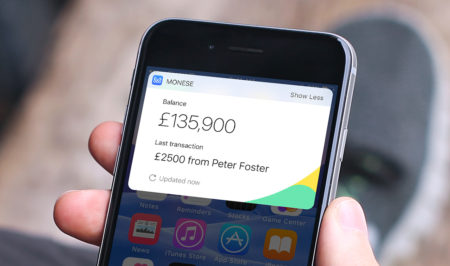Artificial intelligence is changing the way tourists inquire and book travel. It has now become the new middleman in online search. Instead of going through endless Google results, many young travelers will receive instant recommendations from AI-powered platforms such as ChatGPT, Perplexity, DeepSeek, and Google’s AI Overviews.
This shift would certainly sound intimidating to any travel and hospitality business, yet, in reality, it is a golden opportunity for travel brands to address their audiences differently.
AI bases its answers on trusted and high authority sources. Should your travel brand become one of those referrals, you are on your way to getting traffic and referrals without needing to rank at the top of traditional search engine result pages (SERPs).
The trick is to make your content and online presence “AI-friendly” so that these platforms naturally pick up on your content. In this guide, we’ll go through why AI-generated traffic matters and look at some of the best ways to get your brand indexed for valuable mentions.
Why AI Traffic and Referrals Matter
Imagine how travelers plan or prepare for their trips today. Instead of typing the keyword phrase “best beaches in Greece” and skimming through ten blogs, they now might ask, “Where should I go for a beach holiday in Greece?”. AI tools take that request and summarize the top options, citing a few worthy references. If your blog, travel agency, or booking website is one of those sources, instantly, you’ve gained credibility and exposure.
This information matters because the AI answers tend to be those offered right at the very start of the traveler’s research journey. Being one of those referrals allows you to position yourself right in front of the traveler at the very moment they start looking for travel inspiration. And because AI platforms tend to cite websites with proven expertise and reputation, being cited means you have a higher chance of getting steady, high-quality leads.
That’s where savvy marketing comes in. With a blend of great content, quality partnerships, and targeted travel SEO services, you can position your business as a resource that AI tools naturally pull answers from.
9 Best Travel Marketing Techniques for AI Traffic and Referrals
Here are our recommendations for the most effective travel marketing tactics to secure AI referrals.
1. Publish Niche, Expert-Level Content
Generic travel posts like “Things to Do in Paris” no longer cut it. AI tools already have endless summaries of broad topics. What they look for are specific, detailed insights that add value. A post like “Best Family-Friendly Parks in Paris with Playgrounds” or “Hidden Wine Cellars in Montmartre” stands out because it answers a very particular traveler question.
The more specific you are, the more likely AI will treat your content as unique. Think about the questions clients often ask you, or gaps you notice in existing online content. Then, create in-depth guides, itineraries, listicles, or how-to posts that thoroughly cover those angles.
Key Takeaways: Be the expert voice in a niche area. The narrower and more detailed your focus, the higher your chance of being cited in AI-generated answers.
2. Optimize for Conversational Queries
When travelers use AI tools, they don’t type keywords like “Iceland Northern Lights.” They ask full questions: “What’s the best time to see the Northern Lights in Iceland, and where should I go?” Your content should reflect this natural style. It’s like talking to a travel consultant.
You can achieve this by structuring your posts around FAQs and “People Also Ask” sections. Use question-based headings, and write answers in a clear, conversational tone. Short, direct responses are especially beneficial because AI models often lift those exact phrases into their summaries.
Imagine writing: “The best time to see the Northern Lights in Iceland is from September to April, with peak activity in March.” That crisp, direct answer is precisely what AI loves to pull.
Key Takeaways: Match the way travelers phrase questions. Use natural, conversational queries in your content to align it with how AI users search.
3. Showcase First-Hand Experience
AI models can spot generic content. What they value more are sources with first-hand expertise. That’s why travel blogs that include personal stories, unique photos, or insider details that many people don’t know often get cited. If you run a safari company, for instance, sharing your direct knowledge of animal migration patterns adds credibility that generic travel portals can’t replicate.
Little touches make all the difference. If you can, talk about the bus number that takes travelers from the airport to a secluded beach, or share the name of a guide you recommend. All these details scream of genuineness. You can also include testimonials or user-generated content to further build that trust.
Key Takeaways: Share first-hand knowledge and original insights. AI platforms favor authentic voices that demonstrate real expertise.

4. Build Topical Authority Through Clusters
Publishing one article about Italy won’t make your website a go-to authority. AI tools look for consistent coverage across related topics. This is where content clusters come in. Instead of stand-alone posts, create a network of interlinked guides around a specific theme.
For example, if you focus on Italy, build a series: “Best Road Trips in Tuscany,” “Florence for Art Lovers,” “Venice Off the Beaten Path,” and “How to Travel Italy by Train.” Link them together and to a main pillar page. Over time, your site becomes a comprehensive resource.
This approach not only strengthens your SEO but also signals to AI platforms that you’re a specialist. The deeper your coverage in one area, the harder it is for AI to overlook your site.
Key Takeaways: Develop clusters of related content. The more complete your coverage, the more AI platforms will treat you as an expert.
5. Strengthen Digital PR and Backlinks
Mentions across the web help validate your brand. AI platforms often favor sources that other platforms already cite. That’s why earning backlinks and digital PR is so powerful.
Pitching stories to travel magazines, lifestyle blogs, and even mainstream outlets should be the starting point. Data-driven content generally sells well, e.g., “Top 10 Emerging Adventure Destinations for 2026.” Journalists seek fresh insights; when they cite your study, both exposure and authority are attributed to you.
Collaborations also play a role. Being featured on a national tourism board’s website or working with influencers who link back to you creates a web of credibility. The more signals pointing to your brand, the higher your visibility across AI-generated results.
Key Takeaways: Treat PR and backlinks as authority builders. They make your brand more likely to be trusted and cited by AI.
6. Add Structured Data and Clear Formatting
AI assistants need to extract information quickly. If your content is messy, they’ll move on. Structured Data (or Schema Markup) and clean formatting make your site more digestible.
Use Schema Markup to tell AI what your page is about, whether it’s a travel guide, an FAQ, or an event listing. Break up text with bullet points, numbered lists, and data tables. For example, a table comparing “Best Time to Visit Thailand by Region” is more likely to get pulled into an AI summary than a long, complex paragraph.
This approach also helps human readers, who prefer skimmable content. And since AI models often replicate human preferences, the overlap is intentional.
Key Takeaways: Format your content for easy scanning. Use schema, bullets, and lists so AI can extract your information effortlessly.
7. Partner with Complementary Travel Brands
Your brand doesn’t have to stand alone. Partnerships with other travel businesses can expand your reach. For example, a boutique hotel could team up with a local tour company to create a joint venture. When AI tools summarize options for “things to do in Cape Town,” both brands might benefit.

Affiliate partnerships also count. If your site recommends travel insurance providers or luggage companies, and AI search engines cite those businesses, you gain indirect visibility through association. Joint webinars, podcasts, or even co-authored blog posts can extend your brand footprint.
Key Takeaways: Collaborate with complementary brands. Partnerships increase the number of ways your business can appear in AI-driven results.
8. Refresh Evergreen Content Regularly
AI tools prioritize content that feels fresh. An outdated post about “Best Places to Visit in Thailand” that lists closed attractions won’t get picked up. Regular updates are essential.
Every few months, revisit your evergreen posts. Update opening hours, prices, new attractions, and years, e.g., “Top 10 Emerging Adventure Destinations for 2026”. Add fresh photos or insights. Even small changes, such as replacing old hotel recommendations, signal to AI platforms that your content is current.
This practice also enhances your chances in traditional search engines, providing a double win. Additionally, travelers trust sites that give the most up-to-date information.
Key Takeaways: Keep evergreen content updated. Freshness boosts both AI visibility and user trust.
9. Experiment with Multi-Format Content
AI pulls information from more than just blogs. It also references videos, podcasts, and interactive content. Expanding into these formats increases your chances of being mentioned.
For instance, a YouTube video on “Top Hiking Trails in Patagonia” may be cited when someone asks AI for trekking suggestions. A podcast episode about “Traveling Italy by Train” could surface in AI summaries about rail journeys.
Interactive content, such as maps, checklists, or itineraries, also stands out. Not only do they engage travelers, but they also provide structured information that AI can easily use.
Key Takeaways: Diversify beyond written content. Explore video, audio, and interactive formats to maximize visibility in AI-driven results.
Conclusion
AI is changing how travelers discover, plan, and book their trips. Instead of competing for the top spot on search engines, your goal now is to be a trusted source that AI platforms reference.
By publishing niche content, answering conversational queries, establishing topical authority, and exploring new formats, your travel brand can thrive in this new search landscape.
The key takeaway? Focus on being genuinely useful to travelers. If your content helps real people, AI will recognize that value and surface your brand more often.
With steady effort and a smart marketing strategy, you’ll not only keep up with the changes, but you’ll stay ahead of them.
Next Read: AI Tools for Freelancers in September 2025
Keep the conversation going...
Over 10,000 of us are having daily conversations over in our free Facebook group and we'd love to see you there. Join us!



